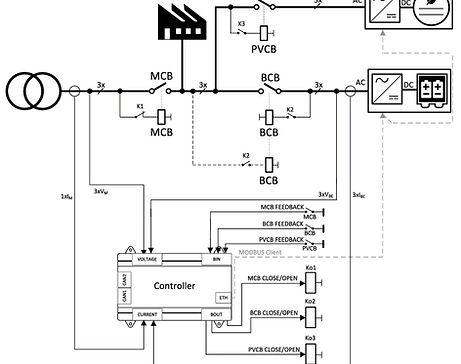
Our Work
We do this for the love of the game. We are organized via the use of key software applications and methodologies, structured with Quality Management System to ISO 9001:2015 standards, connected to our suppliers via proprietary APIs, and subject matter experts on renewables, control systems, engineering, and manufacturing. Windforce Technology implements advanced control concepts into real world applications including island (stand-alone), microgrid, and parallel-utility projects utilizing distributed small wind turbines, photo-voltaic and agri-voltaic components, and battery energy storage systems.

01
Hybrid Microgrid WT-PV-BESS
Advanced hybrid microgrid with battery energy storage, renewables, and diesel generator. Complete engineered systems including wind turbine (WT), solar photo-voltaic and agri-voltaic (PV), battery energy storage systems (BESS), and advanced controllers for independent energy production and management via artificial intelligence and machine learning applications, including SCADA with interactive data visualization dashboards and automated reporting functionality.
02
Advanced Control Software
Advanced control software with Over Voltage Ride Thru (OVRT) and Low Voltage Ride Thru (LVRT) via complex control strategies utilizing wind, solar, and battery energy storage, completely configurable.


03
UL508 Panel Shop
UL508 certified panel shop capabilities include retrofit of obsolete control system circuit boards, reverse engineering, complete panel and control system builds for prototypes, low or high volume projects, installation and commissioning. We are currently [2025] retrofitting controllers on (49) Z-750 and (57) MWT-600 wind turbines, adding advanced capabilities to increase energy production by up to 10% annually, improve operations and maintenance via modern GUI (HMI), and increase operational life-cycles.
04
Documentation Management
We use advanced software applications and tools that optimize data and documentation management including revision tracking, QA/QC inspection records, traceability of critical components, instant quote capabilities, and others. Our use of the Diataxis framework provides a core structure by organizing our documentation into four types: Tutorials, How-To Guides, Reference, and Explanation.
